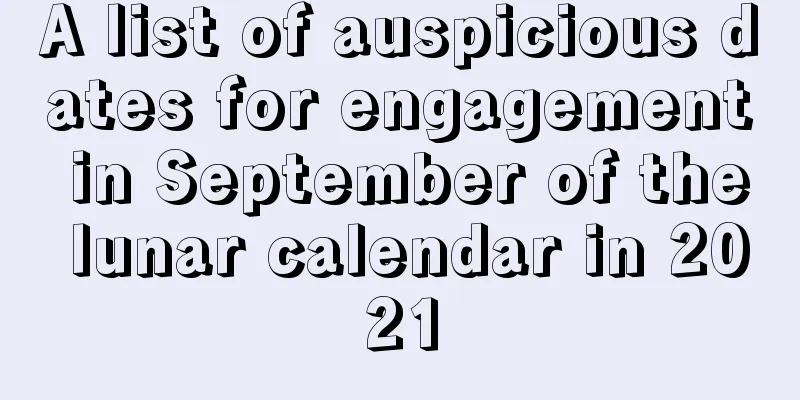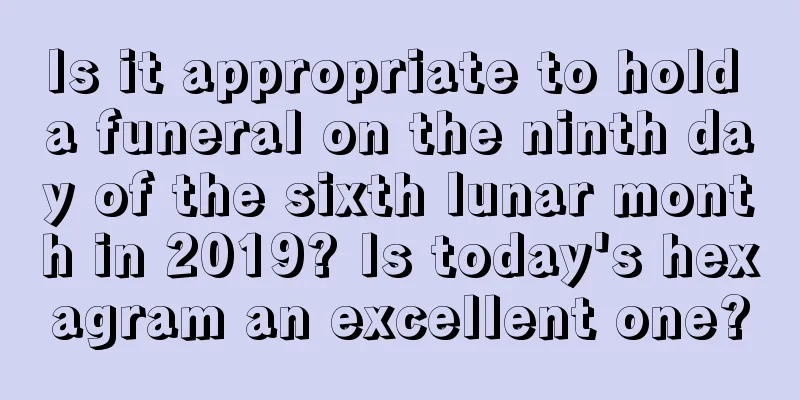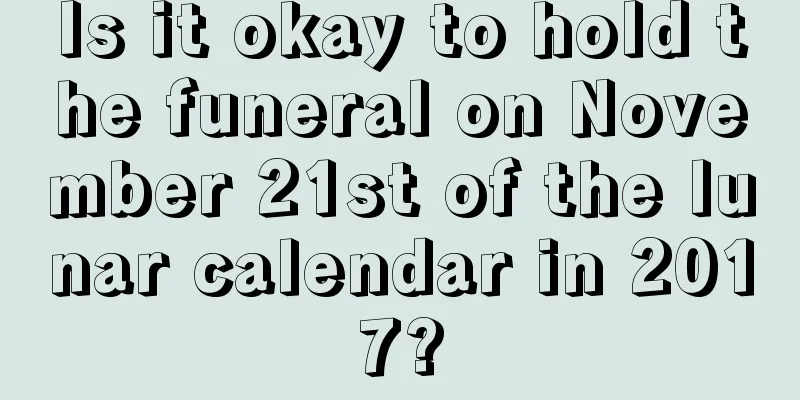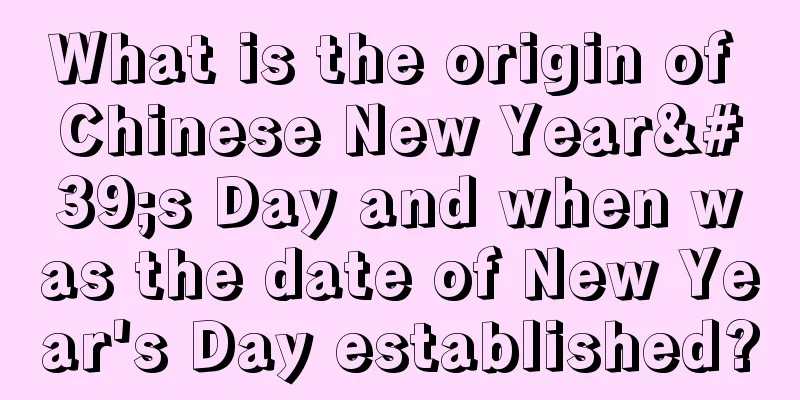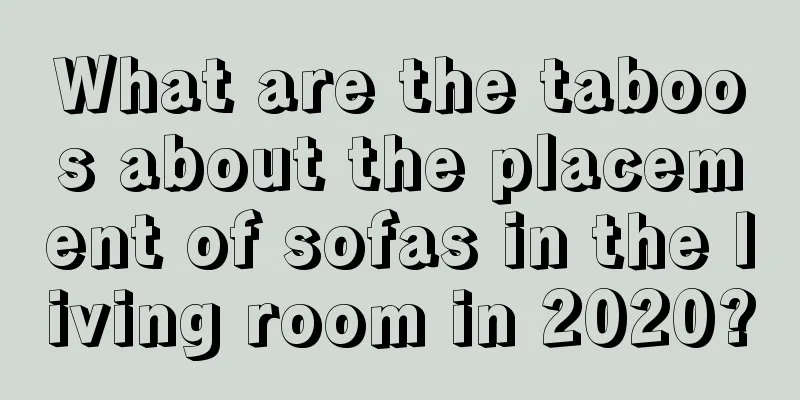When is Mid-Autumn Festival? When did Mid-Autumn Festival officially become a festival?
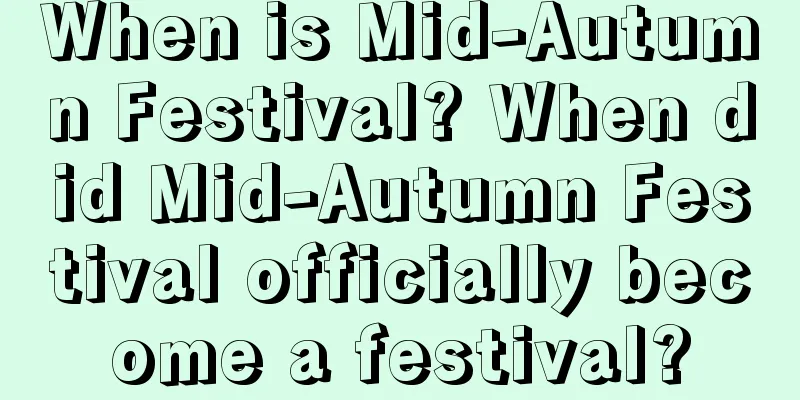
The fifteenth day of the eighth month in the lunar calendar is my country's traditional Mid-Autumn Festival. So, when is the Mid-Autumn Festival? When did Mid-Autumn Festival officially become a festival? Let’s learn more about it with the editor! The eighth month of the lunar calendar has finally arrived. The scorching heat of summer has faded and we are welcoming the cool and tranquil autumn. Welcome to Shuimoxiansheng.com to obtain the exciting fortune content for the eighth month of the lunar calendar in 2020.When is Mid-Autumn Festival?——Mid-Autumn Festival is a day for appreciating the moon and drinking wine."The Book of Rites: Sacrifices" states: "In the royal palace, sacrifices are made to the sun; at night, sacrifices are made to the moon." According to ancient rules, the emperor would sacrifice to the sun at the spring equinox and to the moon at the autumnal equinox every year. The Autumnal Equinox is in August, which is the middle month of the three autumn months, so it is called "Mid-Autumn Festival". During the Mid-Autumn Festival, the weather is generally cool and the moon appears exceptionally bright. The hot summer has just passed and the severe winter has not yet arrived, so the weather is very pleasant. In addition, it is the harvest time, with new crops appearing and fruits and vegetables fragrant. It is natural to thank the gods and hold banquets and drink. During the Qin and Han dynasties, people inherited the customs of previous generations and attached great importance to the Mid-Autumn Festival moon worship activities. During the Han Dynasty, the emperor had to drink "Zhu" wine which had been brewed many times in August. In the Tang Dynasty, there were already activities such as climbing a stage to watch the moon, sailing on a boat to enjoy the moon, and drinking wine to the moon. During the reign of Emperor Taizong of the Song Dynasty, the 15th day of the eighth lunar month was officially designated as the Mid-Autumn Festival. ——Mid-Autumn Festival is the day when our longing for each other grows stronger. The yearning in the world is like a large patch of green grass, growing wildly, piling up, surging, and spreading to the horizon; Or a son far away, excitedly singing birthday songs for his father in his hometown dialect, holding a microphone; Or a loving mother, wearing reading glasses, knitting a sweater for her daughter overseas; Or lovers in love, using the most intimate and sweetest text messages to express their most distant lovesickness to each other. ——Mid-Autumn Festival is a day when the fragrance of poetry is in the air. Li Bai's "Drinking Alone Under the Moon" is a lonely synthesis of the poet, his figure, and the bright moon, emitting the intoxicating aroma of wine and the poet's romantic fragrance; Song Su Shi's "Mid-Autumn Moon" is a lament about the end of dusk, the overflow of cold, and the turning of the moon, conveying the bitterness of the fleeting time and the loneliness of the impermanence of life; "Taichang Yin" by Xin Qiji of the Song Dynasty is a fusion of the poet's gazing at the moon, his sorrow for himself, and his sigh for the country. It expresses the sadness of a beauty in her old age and her endless ambition. ——Mid-Autumn Festival is the day when myths are rewritten. Miss Moth and handsome man Hou Yi, you should climb up the rainbow bridge between heaven and earth, and no longer suffer from the pain of separation. Rabbit Fairy who has practiced for thousands of years, your youngest daughter who was sent to the Moon Palace should come back to reunite with her family. Wu Gang, you should remember the sincere teachings of others, study diligently, and stop being obsessed with seeking immortality. Mid-Autumn Festival and ZhongqiuAccording to the ancient Chinese calendar, there are four seasons in a year, each season has three months, and each season has three names. Therefore, the three months of autumn are also called Mengqiu, Zhongqiu and Jiqiu. In Shuowen Jiezi, "Zhong" means "middle". Because the 15th day of the eighth month in the lunar calendar falls in the middle of August, it is called "Mid-Autumn Festival".There are exactly three months from the Beginning of Autumn (August 7 or 8 every year) to the Beginning of Winter (November 7 or 8). Although the lunar calendar always falls on August 15, the dates of the Mid-Autumn Festival calculated based on the Gregorian calendar are different, but at least they are all in the middle of the month. In the more than 100 years between 1910 and 2010, the earliest Mid-Autumn Festival occurred on September 8, in 1957 and 1976; the latest Mid-Autumn Festival was on October 8, in 1919 and 1938. When did Mid-Autumn Festival officially become a festival?According to folk experts, the Mid-Autumn Festival, also known as the "Family Reunion Festival", officially became a festival as early as the Tang Dynasty. It is the second largest traditional festival in China after the Spring Festival and has a history of more than a thousand years.The Mid-Autumn Festival, Qingming Festival and Dragon Boat Festival have become national statutory holidays. Experts say that the origin of the Mid-Autumn Festival can be said to be directly related to the ancient Chinese custom of offering sacrifices to and worshipping the moon. In the eyes of ancient people, the moon was the second most important god after the sun and has always been an important object of worship. In the book "Zhou Li", there are records of "welcoming the cold on Mid-Autumn Night" and "offering good fur coats on Mid-Autumn Festival". During the Wei and Jin Dynasties, there was a record that said: "The emperor ordered the Shangshu to stay in Niuxiao, and on the evening of the Mid-Autumn Festival, he and his entourage went sailing on the river in disguise." It can be seen that people already had some folk activities during the Mid-Autumn Festival at that time. By the early Tang Dynasty, Mid-Autumn Festival had become a fixed festival. "The Book of Tang Dynasty: Records of Emperor Taizong" records the "Mid-Autumn Festival on August 15th". The popularity of the Mid-Autumn Festival began in the Song Dynasty. By the Ming and Qing Dynasties, it had become as famous as New Year's Day and became one of the major festivals in my country. Experts said that in the traditional calendar, each season is divided into three months of "Meng, Zhong, and Ji". "Zhongqiu" is in the middle of autumn, spanning the two solar terms of Bailu and Autumnal Equinox, so the Mid-Autumn Festival is also called "Zhongqiu". The moon on August 15th is rounder and brighter than the full moon at any other time. Therefore, Mid-Autumn Festival also has other moon-related names such as "Moon Festival", "Moon Eve", "Mid-August", "August Meeting", "Moon-Chasing Festival", "Moon-Playing Festival" and "Moon-Worshiping Festival". On this night, people look up at the full moon, longing to be reunited with their families, so Mid-Autumn Festival is also called the "Reunion Festival." "The Mid-Autumn Festival is also very rich in legends. Myths such as Chang'e flying to the moon, Wu Gang cutting cassia trees, and the Jade Rabbit pounding medicine are widely circulated, which also enriches the traditional cultural connotation of the Mid-Autumn Festival." As an important traditional festival among the Chinese people, there are various activities on this day, and people who are away from home all return home to reunite with their families and celebrate the Mid-Autumn Festival together. In the Tang Dynasty, the main activities during the Mid-Autumn Festival were moon-watching and moon-gazing. During the Northern Song Dynasty, the main practice was to worship the moon. During the Southern Song Dynasty, people gave each other mooncakes as gifts to symbolize reunion, and also participated in activities such as dancing grass dragons and building pagodas. Since the Ming and Qing Dynasties, the customs of the Mid-Autumn Festival have become more popular. Later, many places formed special customs such as burning incense, setting up Mid-Autumn Festival trees, releasing sky lanterns, walking on the moon, and dancing fire dragons. Folklore experts said that celebrations will be held all over the country on the Mid-Autumn Festival. Although the forms and customs are different, they all express people's hope for happy reunion, their infinite love for life and their yearning for a better life. |
Recommend
How to say "Merry Christmas Eve" in English? A brief introduction to the origin of Christmas Eve
Christmas Eve is here and many people are busy cel...
What zodiac sign is a baby born on November 22, 2017 in the lunar calendar? Will you be soft but not hard?
Introduction: In Western culture, zodiac signs are...
Is October 28th of the lunar calendar in 2021 an auspicious day? Is it suitable for signing a contract?
October of the lunar calendar, beautiful scenery i...
Is the first day of the seventh lunar month in 2021 an auspicious day? Is it suitable for moving to a new home?
In the seventh month of the lunar calendar, early ...
Is it appropriate to offer sacrifices on the 23rd day of the seventh lunar month in 2019? What should we pay attention to when offering sacrifices to our ancestors?
Introduction: Ancestor worship is an important fol...
What should you pay attention to when traveling during May Day 2022? What are the precautions?
During the May Day holiday, many friends will choo...
How many months does it take to get pregnant if you were born in February of the lunar calendar in 2019? Is your fate good or bad?
How many months does it take to get pregnant if yo...
Is it good for people born in the year of the dog to be born in the Cold Dew solar term? What kind of personality will the dog baby have?
During the Cold Dew season, the weather gets colde...
Can I get the marriage certificate on Mother’s Day 2018? Is that okay?
Introduction: Mother's Day is a holiday to tha...
Is National Day 2017 a good day? Is it okay to worship our ancestors on National Day?
Introduction: Ancestor worship is a grand and sole...
Can I wish you a happy Qingming Festival? What blessings can we say during Qingming Festival?
During the Qingming Festival, the sun is shining b...
What is the content of the lunar calendar for the sixth day of the eighth month in 2019? What will this day be like?
Sometimes I feel that my condition is sometimes g...
Is it okay to open on May 26, the first day of the dog days of 2020? What are the taboos of the dog days of 2020?
Introduction: Generally, you need to choose an aus...
Is it a good idea to pray on March 13th of the lunar calendar in 2020? Which days in the third month of the lunar calendar can we pray for blessings?
The benefits of praying at different times are als...
Is January 30th of the lunar calendar in 2019 an auspicious day for installing a bed? Analysis of the six taboos of bed installation Feng Shui!
Introduction: According to the traditional customs...

